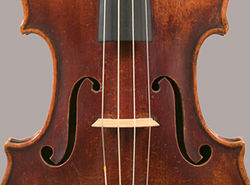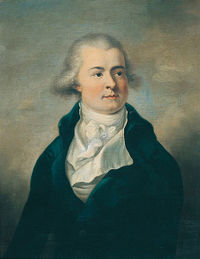Beethoven String Quartets
Beethoven's string quartets have been perennially popular from his time to our own. They anchor the entire string quartet repertory and represent one of the pinnacles of all chamber music of the time. With respect to their place in Beethoven's life, they span the whole of the composer's working period but pop up at irregular intervals, causing us to wonder whether Beethoven had to be in a particular frame of mind, or perhaps to have a new idea about how to go about their composition, or a compelling commission before digging in.
Like the rest of Beethoven oeuvre, the string quartets fall into three main groups, each of which has its own personality. The early quartets (Op. 18) give distinct evidence of the composer's promise and originality. The "Rasoumovsky" quartets Op. 59 come from one of Beethoven's most fertile and productive periods. Each is a classic in its own right. Collectively they show enormous strides in Beethoven's development and imagination. Opp. 74 and 95 continue in the same directions but with significant differences of character. The remaining quartets, from Beethoven's late period, are rugged, highly individual works that inadvertently document the composer's struggle with progressive hearing loss.

The Early Quartets: Op. 18 (Quartets Nos. 1-6)
The range of techniques used by Beethoven throughout his quartets is stunningly broad. Each work has its own intricacies. Many have intertextual relationships with other works by Beethoven and by other composers. This set of quartets offers strong evidence of Beethoven's close study of the string quartets of Haydn (1732-1809) and Mozart (1756-1791), particularly Haydn's "Russian" quartets Op. 33 (1781) and Mozart's "Haydn" quartets (K. 387, K. 421, K. 428, K. 458, K. 464, K. 465; 1782-85).
Beethoven's first published collection of string quartets (Op. 18, published in Vienna in 1801) consisted of six works he composed between 1798 and 1800. By the reckoning of some these consisted the major achievement of his early years in Vienna. He closed in the quartet medium through explorations of other string combinations including a string trio (Op. 3, Eb Major, composed before 1794), a string quintet (Op. 4, also Eb Major, 1795), a set of three trios (Op. 9, 1797-98) and a handful of other chamber works, all composed since 1790. Opp. 3 and 4 were the earliest to be published (Vienna, 1796); the trios Op. 9 followed (1798).

Franz Joseph Maximilian von Lobkowitz
A significant portion of the moral support that allowed Beethoven to focus on this cogent, wide-ranging collection of quartets was provided by a nobleman of Beethoven's generation--the Bohemian prince Franz Joseph Maximilian von Lobkovitz (1772-1816). The prince spent most of the year in a new, magnificent palace in Vienna; important components of the family legacy (including music manuscripts and family portraits) are preserved in an near Prague. Although he was a general in the imperial army, the prince had a highly cultivated love of music and played several instruments. Without his indulgence, we would lack seven of Beethoven's string quartets, three symphonies (the third, the fifth, and the sixth), and the triple concerto.
Lobkowitz was an ardent fan of the music of his time. He was particularly fond of the music of Handel and Haydn. He studied the violin and cello. He was a member of Vienna's Gesellschaft der Musikfreunde. He met Beethoven in 1795 and two years later, upon turning 25, he established a Kapelle of five musicians in the family's Viennese palace. Its concerts between 1798 and 1806 featured string and piano quartets, arias from recent operas, and other chamber works.
In 1807 Lobkowitz assumed the direction of productions at the Hoftheater (the court theater). Johann Friedrich Reichhart wrote of the count in 1808/09 that "he lived for music day and night." Under his direction the quantities of musicians he employed rose steadily. At one point they totalled 43 instrumentalists and 36 singers. The payroll became unmanageable. To underwrite his costs Lokowitz recruited a number of noblemen to the cause of his musical enterprises. Among them were Count Kinsky and Archduke Rudolf. By 1814, however, Lobkowitz himself was almost bankrupt. He fled the city. The Kapelle was dissolved in 1814, but the Lobkowitz Palace was remembered as the home of an "Academy of Music." The count died in 1816.
The Middle-Period Quartets
Op. 59 (Quartets Nos. 7-9)
Op. 74 (Quartet No. 10)
Beethoven's "Harp" quartet, composed in 1809 and published a year later in Leipzig and London, was dedicated to Count Lobkowitz.

Op. 95 (Quartet No. 11)
The Late Quartets
Op. 127 (Quartet No. 12)
Op. 132 (Quartet No. 13)
Opp. 130 and 133 (Quartet No. 14, Versions A and B]
Op. 131 (Quartet No. 15)
Op. 135 (Quartet No. 16)
Scores (downloadable)
| Opus | Title | Key | Nickname | Date | CCARH score (PDF) |
B&H score (PDF) | |
|---|---|---|---|---|---|---|---|
| Op. 18, No. 1 | String Quartet No. 1 | F Major | 1798-1800 | full | [1] | ||
| Op. 18, No. 2 | String Quartet No. 2 | G Major | 1798-1800 | full | [2] | ||
| Op. 18, No. 3 | String Quartet No. 3 | D Major | 1798-1800 | full | [3] | ||
| Op. 18, No. 4 | String Quartet No. 4 | C Minor | 1798-1800 | full | [4] | ||
| Op. 18, No. 5 | String Quartet No. 5 | A Major | 1798-1800 | full | [5] | ||
| Op. 18, No. 6 | String Quartet No. 6 | B♭ Major | 1798-1800 | full | [6] | ||
| Op. 59, No. 1 | String Quartet No. 7 | F Major | "Razumovsky" | 1805-6 | full | [7] | |
| Op. 59, No. 2 | String Quartet No. 8 | E Minor | "Razumovsky" | 1805-6 | full | [8] | |
| Op. 59, No. 3 | String Quartet No. 9 | C Major | "Razumovsky" | 1805-6 | full | [9] | |
| Op. 74 | String Quartet No. 10 | E♭ Major | "The Harp" | 1809 | full | [10] | |
| Op. 95 | String Quartet No. 11 | F Minor | 1816 | full | [11] | ||
| Op. 127 | String Quartet No. 12 | E♭ Major | 1825 | full | [12] | ||
| Op. 130 | String Quartet No. 14a | B♭ Major | 1825-27 | [ ] | [13] | ||
| Op. 131 | String Quartet No. 15 | C♯ Minor | 1825-27 | full | [14] | ||
| Op. 132 | String Quartet No. 13 | A Minor | 1825 | [ ] | [15] | ||
| Op. 133 | Grosse Fuge [Quartet No. 14b] | B♭ Major | 1825-27 | [ ] | [16] | ||
| Op. 134 | String Quartet [Quartet No. 14b-2] | B♭ Major | 4-hand arrangement | 1827? | [17] | ||
| Op. 135 | String Quartet No. 16 | F Major | 1826-27 | [ ] | [18] |
Audio examples from each movement of the three Op. 59 quartets are provided by the Digital Archive of the Beethoven-Haus in Bonn, the city of Beethoven's birth.[19]